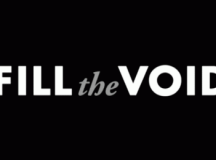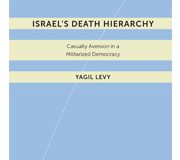The eminent political scientist Seymour Martin Lipset described Daniel P. Moynihan as ‘the prescient politician’ for his suggestion, in 1979, that the Soviet system ‘could blow up in the 1980s’ as a result of economic crisis, ‘moral decay,’ ‘the rise in mortality rates [and] the nationality strains.’
But one suspects that even Moynihan could hardly have predicted, nearly 40 years after the Soviet Union’s success in November 1975, in securing a United Nations General Assembly Resolution defining Zionism as a form of racism, that the campaign to de-legitimise Israel would continue, sponsored by an unholy alliance of authoritarian regimes and Western leftists.
The recent decision of the otherwise anonymous American Studies Association to join the academic boycott of Israel is only the latest indication that the toxic ideologies and perverse politics behind the passage of Resolution 3379 remain virulent, even though the resolution was formally revoked in 1991. In Moynihan’s Moment: America’s Fight against Zionism as Racism, McGill University historian Gil Troy has written a vivid and compelling account of the conflicts and controversies surrounding the Zionism-is-racism resolution (hereafter z/r), shedding light on Moynihan’s singular personality, the pathologies of the UN and the international politics of the time.
Passed by a 72–35 margin (with 32 states abstaining or absent), the resolution was a piece of Cold War politics, representing the zenith of Soviet influence in the Arab world and on the ‘Third World’ or ‘non-aligned’ states. It also signaled the malaise afflicting the United States and the democratic West following the defeat in Vietnam, the Watergate scandal, President Richard Nixon’s resignation, and the economic crisis precipitated by the dramatic OPEC oil price hikes. Moynihan recognised the resolution as a means not simply of delegitimising Israel and its Western allies but of enhancing the Soviet Union’s influence amongst developing states and deflecting attention from its human rights abuses, notably its treatment of Soviet Jewry.
Troy explains why Moynihan, an Irish Roman Catholic born into a single-parent family in the slums of New York’s Hell’s Kitchen, became the most forceful and articulate defender of Israel (with the notable exception of Chaim Herzog, Israel’s Ambassador to the UN) throughout the affair. While he had served as an Assistant Secretary of Labour in President Lyndon Johnson’s administration, Nixon appointed him US Ambassador to India, where his experience helped forge his conviction that the US was losing the Cold War battle for hearts and minds in the developing world and in international forums. ‘Moynihan saw the attack on Zionism through the lens of the Cold War and America’s Vietnam humiliation, fearing the Third World’s rise and the west’s decline,’ Troy writes.
In an influential article in Commentary, ‘The United States in Opposition,’ Moynihan argued that the Soviets and their allies were outmaneuvering democratic Western states in international forums and called for an ideological counter-offensive in defense of liberal principles. The polemic caught the eye of President Gerald Ford, who subsequently appointed him as U.S. ambassador to the United Nations.
The first intimations of the coming z/r storm came earlier in 1975 in the form of a diplomatic cable from Ambassador Barbara White, the principal US representative to the UN’s International Women’s Year Conference in Mexico City. She considered it ‘regrettable’ that the US had found it necessary to vote against the forum’s final declaration calling for the elimination of ‘apartheid,’ ‘racial discrimination’ and ‘Zionism’ and wrote that it had been ‘particularly unfortunate that we were isolated in company only with Israel.’ For his part, Moynihan described the declaration as a ‘totalitarian tract’ and cabled White in reply, asking ‘how if the Declaration was so inspiring, we had voted against it, and alternatively if we had voted against it, how it could be so inspiring.’ As Troy notes, Moynihan ‘found this exasperating, as he realized that White and her colleagues believed “their job as diplomats was to get along with other diplomats.” So they traveled around, hobnobbing and appeasing, tolerating “the most outrageous assaults on principles they should have been defending.”’
The episode reinforced Moynihan’s conviction that the US diplomatic corps – described by Troy as ‘conflict-averse, guilt-ridden, turf-oriented’ – was disinclined and ill-equipped to conduct political warfare in international institutions. His more assertive approach to countering totalitarianism faced ‘bureaucratic and ideological resistance, especially following the 1960s,’ Troy writes. ‘Moynihan was fighting a culture war, especially in the State Department, where he saw traditional WASP politesse mixing with 1960s-style adversarial hypercriticism’ – of the US, not its enemies.
As Moynihan strove to prevent the declaration working its way through the UN institutions before morphing into Resolution 3379, Moynihan received little assistance from the State Department. Indeed, as Troy demonstrates, he was actively sabotaged by Secretary of State Henry Kissinger. Moynihan’s ascendance threatened Kissinger,’ notes Troy. ‘Kissinger enjoyed his status as the Harvard wunderkind, dazzling bureaucrats and reporters; he did not want to share the spotlight with another articulate intellectual with a crimson glow.’ Furthermore, Moynihan’s combative and ideological approach to foreign policy was in marked contrast with Kissinger’s détente-driven realist strategy which sought to accommodate rather than confront or counter Soviet ambitions. ‘In classic realpolitik fashion, [Kissinger] believed that countries have no friends, only interests,’ Troy writes, whereas Moynihan ‘was suggesting that America could only find salvation by remembering core democratic values and expressing them in foreign policy as well as in domestic policy.’
Nonetheless, Troy observes that Moynihan’s ‘ideological counterattack’ was supported by the AFL-CIO labour federation and leading American Social Democrats, including Bayard Rustin, the celebrated civil rights leader. While Troy clearly sees Moynihan’s approach as prefiguring neo-conservatism, he inadvertently makes a stronger case for viewing him as the personification of the post-war anti-communist Vital Center, or as a predecessor of the ‘muscular liberalism’ that appears to be all but extinct on the contemporary American left.
‘Contrary to the conventional wisdom,’ Troy writes, ‘not all of these anti-communists were neo-conservatives, abandoning their leftist values. Some like Bayard Rustin, [Social Democrat leader Carl] Gershman and the labor leader Lane Kirkland remained Progressives, but were tough, unsentimental, freedom-loving liberals who recognised the evils lurking in Communism.’
Moynihan recognised the z/r equation as an essentially totalitarian concept. Resolution 3379 was ‘a political lie of a variety well known in the 20th century and scarcely exceeded in all the annals of untruth and outrage,’ he declared, in an indignant address to the General Assembly during the debate. ‘The lie is that Zionism is a form of racism. The overwhelming truth is that it is not.’ By approving the resolution, he said, the ‘abomination . . . has been given the appearance of international sanction,’ and the General Assembly had granted ‘symbolic amnesty — and more — to the murderers of 6 million European Jews.’
‘Using Freedom House classifications,’ Troy notes, Moynihan’s staff ‘discovered that 92 per cent of the “yes” vote came from countries which were partly free or dictatorships, while 76 per cent of the “no” vote came from free liberal societies.’
The Soviet Union is in the dustbin of history, but the UN is still a site of ideological contestation, plagued by authoritarian and totalitarian regimes seeking to subvert international human rights norms. Representatives of China, Cuba, Venezuela, Russia and Saudi Arabia sit on the UN’s Human Rights Council and Israel is, of course, disproportionately targeted with hostile ideologically-driven UN resolutions. While some democracies are more assertive than others, the most visible and creative counter-offensive comes from the non-government sector, notably in the form of Hillel Neuer’s UN Watch.
The conflict in Syria suggests that for the first time since the Spanish Civil War, an international alliance of autocratic powers has succeeded in suffocating a potentially democratic transition in the face of prevarication and division among the world’s leading democracies. The episode is perhaps the most dramatic indication that democracy is on the defensive: undermined from within by economic crisis and political dysfunction and challenged from without by newly confident, assertive and well-resourced authoritarian and illiberal states and non-state actors.
The current threats are more insidious than the existential challenge of Soviet Communism because they emerge from both states and non-state actors in the domain of civil society and promote or represent an ideological agenda that dilutes and adulterates the democratic idea.
With trenchant insight and perceptive analysis, Troy’s beautifully written book reminds us that democracy must be defended from its detractors and currently stands in need of what he calls ‘the Moynihan model of warrior leadership and crusading foreign policy idealism.’





































